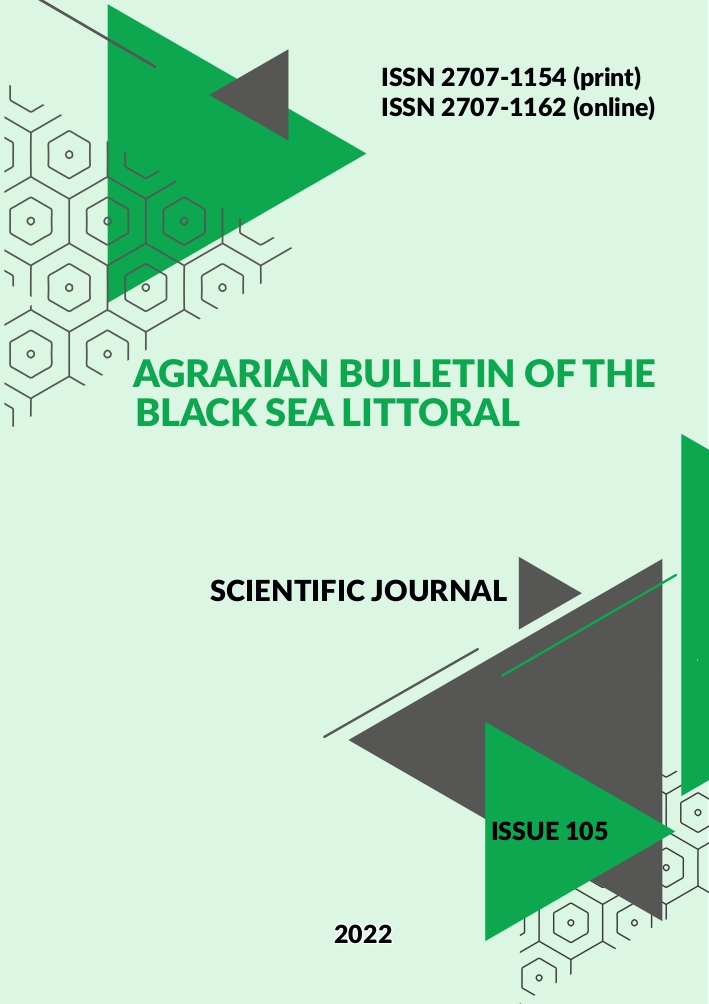EFFECT OF OZONE-AIR MIXTURE ON HARMFUL GASES
DOI:
https://doi.org/10.37000/abbsl.2022.105.09Keywords:
microclimate, harmful gases, ozone-air mixture, optimal parameters, processing, ozonatorAbstract
The analysis was carried out based on the results of an experiment on the effect of ozone on harmful gases using an ozone generator. It was found that in the process of vital activity, cattle release a large number of harmful substances into the indoor air environment, the highest concentration of which are ammonia and hydrogen sulfide particles.
The purpose of our research is to clean the air environment of the premises for keeping animals from harmful gases, protect the environment and ensure occupational safety.
Analysis of the efficiency of its purification by OPS showed that the amount of this substance in the air was reduced to 8.5 mg/m3 or more than four times. Such an effect allows us to assume that it will reduce the number of bronchial diseases in animals and, as a result, will allow to reduce the percentage ratio of cattle deaths.
The concentration of hydrogen sulfide in the air was only ten thousandths of a mg/m3, the analysis of its purification efficiency showed that the amount of this substance in the air in some cases was reduced from 0.00036 mg/m3 to 0.00013 mg/m3 or almost tripled. This is also a positive indicator, although not as important as the concentration of ammonia, but the pulmonary morbidity of livestock also depends on it.
The concentration of nitrogen oxide was 0.009 mg/m3, the analysis of its cleaning efficiency showed that the amount of this substance in the air of the room where the animals are kept is reduced to 0.0025 mg/m3 or more than three and a half times in some cases. Analyzing the result, we can conclude that the ozone-air mixture, although not with a high percentage of efficiency, but cleaned the air in the room for animals from this substance as well.
When examining the air in the room, particles of chlorine were also present. Its concentration was 0.017 mg/m3. Analysis of the effectiveness of its OPS purification showed that the amount of chlorine in the air in some cases was reduced to 0.006 mg/m3 or almost three times. This allows us to conclude about the ability of the ozonator to capture chlorine particles as well.
It has been proven that the effect of OPS on the indoor air of a room for keeping animals gives a positive result. Measurements showed that the concentration of chemical impurities decreased. Carrying out measurements in two modes of operation of the ozonator made it possible to reveal the effectiveness of periodic ozonation of the air environment of the room. Indicators of the concentration of harmful substances in the indoor air of livestock premises indicate that ozonation of existing harmful substances in the air allows to reduce their concentration several times, which will have a beneficial effect on the indicators of the incidence of young cattle and will allow to reduce it several times.
References
Зубець М.В. Етологія молочної худоби : наук. та навч.-метод. вид. / УААН, Національний аграрний ун-т, Харківська зооветеринарна академія. Харків : Бровін О.В. 2010. 263 с.
Пушкар Т.Д. Санітарно-гігієнічне обґрунтування використання озоно-повітряної суміші для обробки молочно-доїльного обладнання : дис. канд. с.-г. наук : 16.00.06 / ХДЗВА. Харків, 2013. 145 с.
Станкевич Г.М., Бабков А.В. Озон в технологіях обробки та зберігання зерна пшениці : монографія. Херсон: Грінь Д.С., 2015. 268 с.
Norman D. A., Kanarev P. M. Enerqy balance of fusion processes of the ozone molecule. Journal of Theoretics. Volume 6–1. Feb-March, 2004. P. 5-18.
Campos, C.C. Effects of storage in ozonised slurry ice on the sensory and microbial quality of sardine (Sardina pilchardus) / C.C. Campos, V. Losada, O. Rodriguez, S.A. Aubourg, J.B. Velazquez // Int J Food Microbiol, 103(2), 2005. Р. 12-130.


